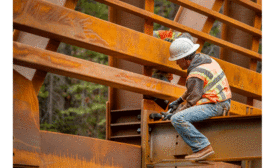Workplace Health
Antibiotic-resistant infections in U.S. kill 35K a year
CDC: Significant progress since 2013 could be lost without more action
November 18, 2019
Buffalo Wild Wings manager dies after exposure to toxic cleaning product fumes
13 others hospitalized
November 11, 2019
Never miss the latest news and trends driving the safety industry
eNewsletter | Website | eMagazine
JOIN TODAYCopyright ©2024. All Rights Reserved BNP Media.
Design, CMS, Hosting & Web Development :: ePublishing









